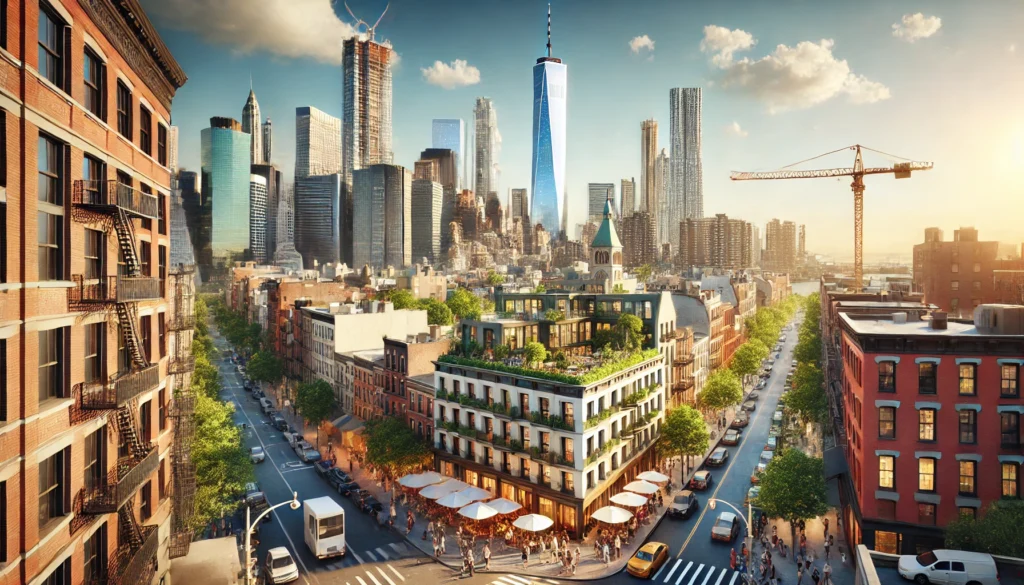Is Lower Manhattan’s Office Market Set for a Comeback?
Short answer: Yes. But let’s dive a little deeper.

According to Adam Foster, Executive VP at CBRE with 14 million square feet of leasing experience, the conversion of underused office space into residential units has helped tighten the market in Lower Manhattan. As a result, demand is poised to rise, especially in key locations like the World Trade Center and along Broadway. “You’ll see a big uptick in leasing in the next couple of quarters,” Foster says, emphasizing that proximity to transportation hubs is a major draw post-COVID.
This potential rebound would mark a significant shift for Lower Manhattan, a market that often faces tougher challenges during economic downturns. Historically, whenever the broader Manhattan market falters, Lower Manhattan suffers more severe declines in occupancy and rental rates. With its narrow streets and older buildings, Lower Manhattan has struggled to keep pace with Midtown, home to some of the world’s most modern office spaces.
Post-pandemic, the gap between Midtown and Lower Manhattan office rents has widened. Research from CompStak shows that, as of mid-2024, average effective rents in Midtown were $79.84 per square foot, compared to $45.80 downtown—a striking 43% difference. This disparity has grown since the early days of the pandemic, when the gap shrank to just 17%.
In response to these challenges, both the city and private developers are pushing for office-to-residential conversions, a process that is complex and costly. For instance, developers are adding light wells to existing office towers to accommodate residential needs. One notable project is the conversion of 25 Water Street, a 1.1 million-square-foot tower formerly home to J.P. Morgan Chase, into 1,300 apartments.
However, residential conversions are still relatively rare, and office vacancy remains a challenge. According to a September report from CoStar, New York City is projected to see an 80% decline in new housing starts in 2024 compared to the previous year. Factors like high labor costs, affordability requirements, and rising borrowing costs have slowed construction, says Victor Rodriguez, CoStar’s senior director of analytics.
Office vacancy rates are high across the city, with CBRE data showing a 17.9% availability rate in Midtown and a 22.5% rate downtown. Yet, despite these figures, Lower Manhattan is seeing some positive trends. According to Cushman & Wakefield, nine downtown office buildings, totaling 6.6 million square feet, have already been converted to residential use or are in the planning stages.
The city is working to streamline the conversion process through Mayor Eric Adams’ “Get Stuff Built” initiative. Rob Holbrook, executive director of the program, notes that 14 properties south of Canal Street are currently in the pipeline for conversion, with more likely to join. The city aims to add 20,000 units over the next decade through office conversions.
Still, financial distress continues to weigh on the market. Research firm Trepp has identified 54 downtown properties, including office towers and hotels, facing loan troubles. Recent examples include the takeover of a $180 million loan tied to 17 State Street and the default by RXR on a $240 million loan for its 33-story tower at 61 Broadway.
Even amid these challenges, experts like Robert Tunis of Colliers note that Lower Manhattan’s office market isn’t necessarily worse off than other parts of the city. However, the area has seen a “flight to quality,” with newer spaces like the World Trade Center and Brookfield Place seeing more demand. This trend is consistent with what’s happening in Midtown, where premium spaces near Rockefeller Center and Park Avenue are also highly sought after.
Jessica Lappin, head of the Alliance for Downtown New York, remains optimistic about Lower Manhattan’s future. Since the 1990s, the area has seen more than 22 million square feet of office space converted to residential, helping to create a vibrant live-work neighborhood. Lappin believes that despite its current struggles, Lower Manhattan will eventually bounce back, citing the borough’s finite land supply as a key factor.
In short, while challenges remain, Lower Manhattan’s office market shows signs of resilience. With continued conversions, strategic leasing, and a focus on quality, the area could be on the brink of a modest revival.
